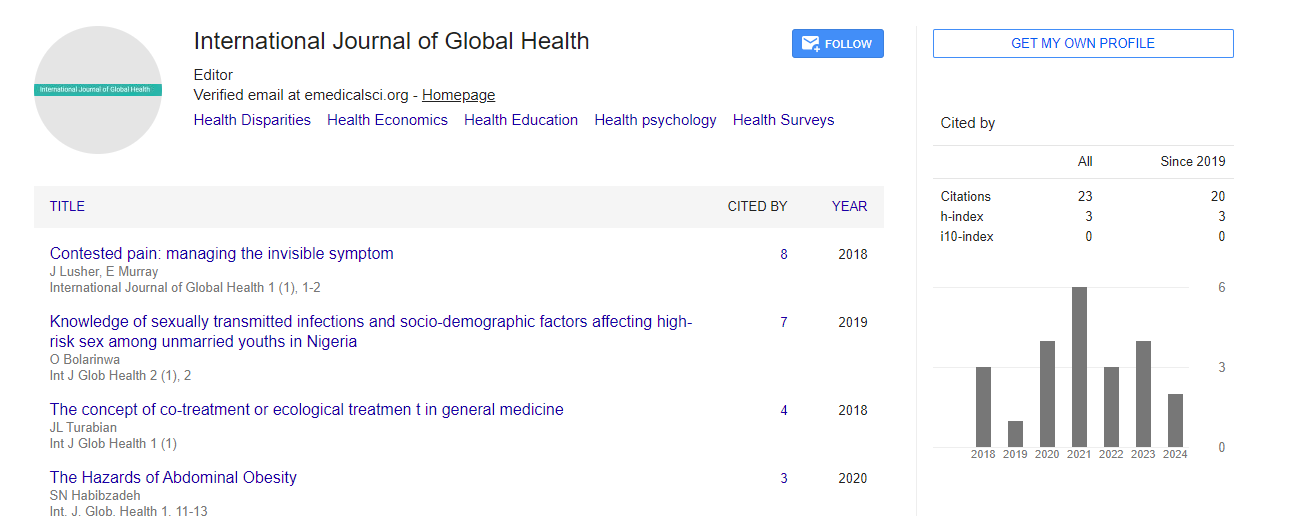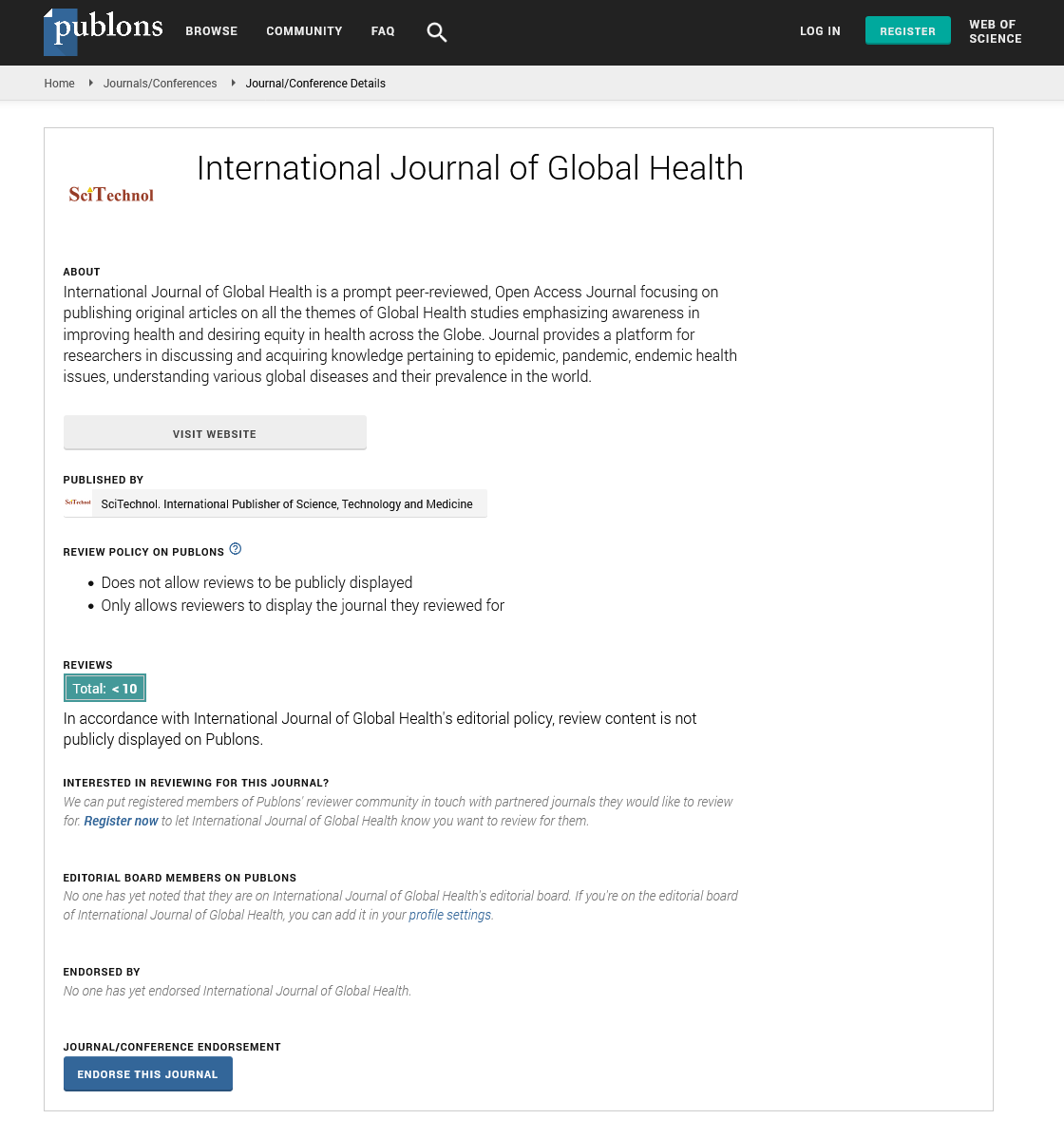Opinion Article, Int J Glob Health Vol: 6 Issue: 1
Understanding Mortality Rate: A Comprehensive Guide
Laura Carmassi*
Department of Clinical and Experimental Medicine, University of Pisa, Pisa, Italy
*Corresponding Author: Laura Carmassi
Department of Clinical and Experimental
Medicine, University of Pisa, Pisa, Italy
Email: carmassilaura@gmail.com
Received date: 21 February, 2023, Manuscript No. IJGH-23-93529;
Editor assigned date: 23 February, 2023, PreQC No. IJGH-23-93529 (PQ);
Reviewed date: 09 March, 2023, QC No. IJGH-23-93529;
Revised date: 16 March, 2023, Manuscript No. IJGH-23-93529 (R);
Published date: 23 March, 2023, DOI: 10.4172/Ijgh.1000170
Citation: Carmassi L (2023) Understanding Mortality Rate: A Comprehensive Guide. Int J Glob Health 6:1.
Description
Mortality rate refers to the number of deaths that occur within a population during a specific time period. It is an important indicator of the health of a population and is often used to assess the effectiveness of healthcare interventions. In this manuscript, we will explore the concept of mortality rate, its different types, and how it is calculated. We will also examine the factors that influence mortality rate and its significance in public health.
Types of mortality rate
There are different types of mortality rate, including crude mortality rate, age-specific mortality rate, infant mortality rate, and maternal mortality rate. Crude mortality rate refers to the number of deaths in a population divided by the total population during a given period. Agespecific mortality rate is the number of deaths within a specific age group per 1,000 individuals in that age group during a given period. Infant mortality rate is the number of deaths of infants under one year of age per 1,000 live births during a given period. Maternal mortality rate is the number of deaths due to pregnancy or childbirth-related complications per 100,000 live births.
Calculating mortality rate
Mortality rate is calculated by dividing the number of deaths during a specific period by the total population at risk during that period. The result is then multiplied by a constant (usually 1,000 or 100,000) to express the rate per unit of population. For instance, if a population of 10,000 experienced 50 deaths in a year, the crude mortality rate would be 5 per 1,000.
Factors influencing mortality rate
Mortality rate is influenced by a range of factors, including age, gender, genetics, lifestyle, environmental factors, access to healthcare, and socio-economic status. Older adults have a higher mortality rate than younger individuals due to age-related conditions such as heart disease and cancer. Males tend to have a higher mortality rate than females due to higher rates of risk-taking behavior and occupational hazards. Genetic factors such as inherited diseases can also influence mortality rate. Lifestyle factors such as smoking, alcohol consumption, and physical inactivity are known to increase the risk of death from various causes. Environmental factors such as pollution and exposure to toxins can also contribute to mortality. Access to healthcare and socio-economic status can also impact mortality rate, as individuals with lower income or limited access to healthcare may have higher mortality rates.
Significance of mortality rate in public health
Mortality rate is a crucial public health indicator as it provides insight into the overall health of a population and helps identify areas for intervention. A high mortality rate may indicate underlying health issues or deficiencies in healthcare access and quality. Conversely, a low mortality rate may reflect successful public health interventions, high-quality healthcare, and a healthy population. Mortality rate is also used to monitor progress towards achieving health-related goals such as reducing infant and maternal mortality rates, improving life expectancy, and reducing deaths from specific diseases such as cancer and heart disease.
Mortality rate is a fundamental public health indicator that provides insight into the health of a population. Different types of mortality rate allow for a more nuanced understanding of mortality trends and their underlying causes. Calculating mortality rate requires accurate data on deaths and population, and various factors such as age, gender, lifestyle, and socio-economic status can influence mortality rate. Monitoring mortality rate is essential for identifying areas for intervention and measuring progress towards achieving health-related goals.
 Spanish
Spanish  Chinese
Chinese  Russian
Russian  German
German  French
French  Japanese
Japanese  Portuguese
Portuguese  Hindi
Hindi 
